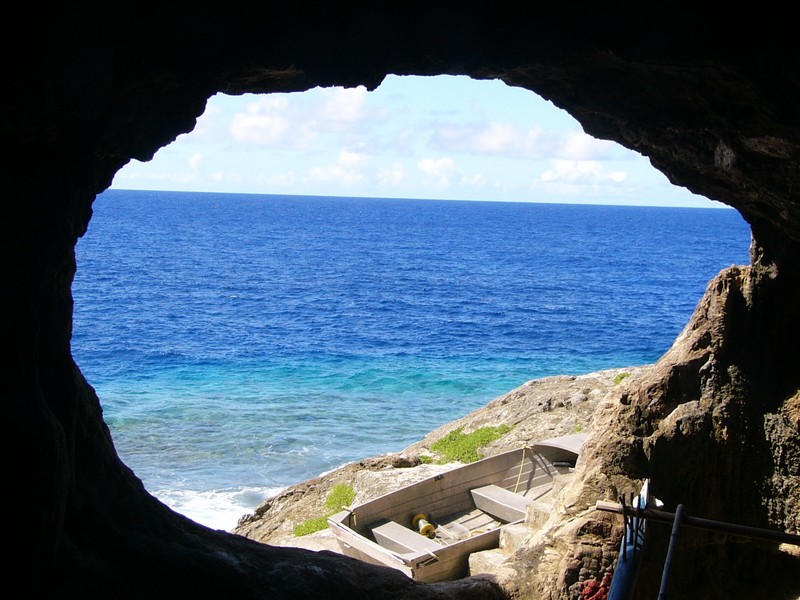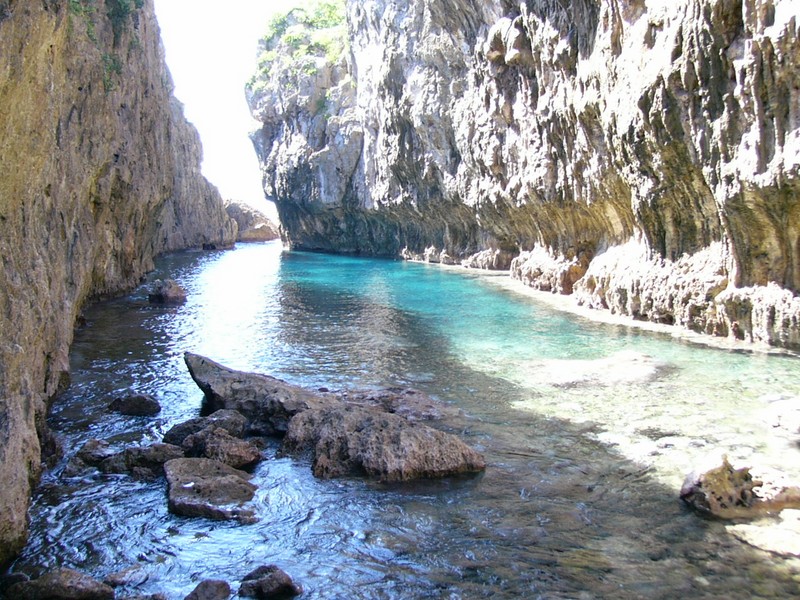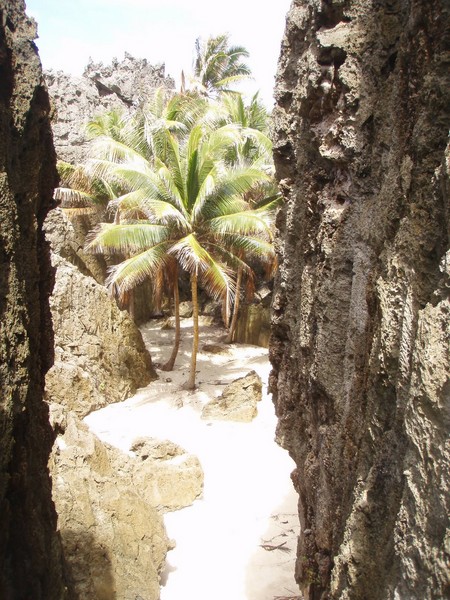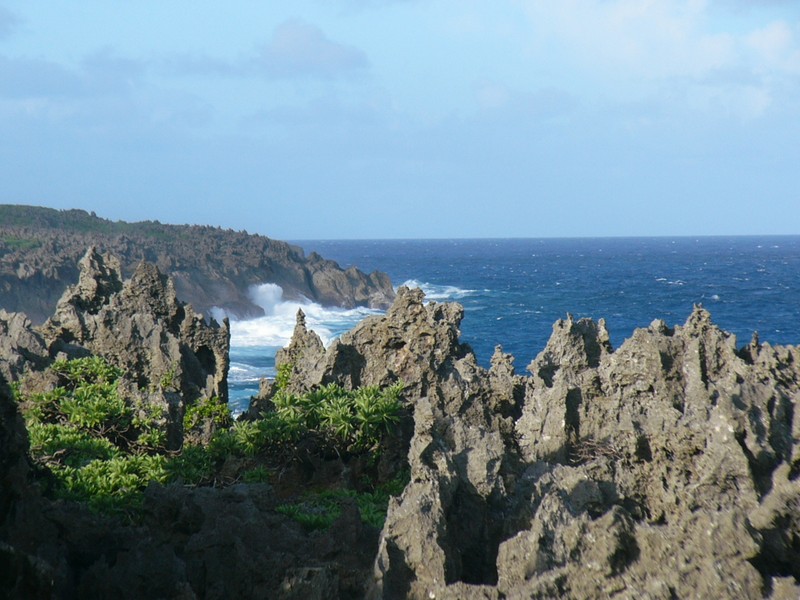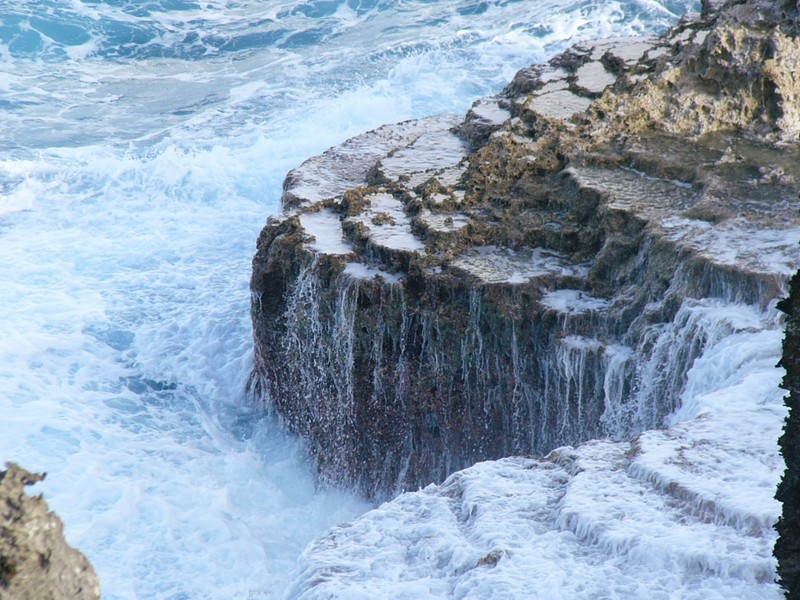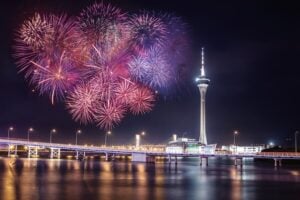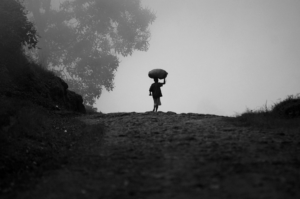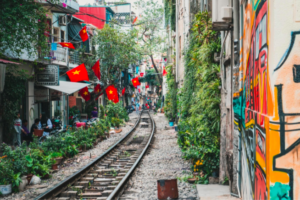Discover the Remotest Polynesian Island
There are destinations in this world where everyone wants to go (Paris, Tahiti, hopefully Saigon) and those only good for the bragging value of having been somewhere hard to find but worth the effort. Niue falls firmly into the latter category, and it’s almost unfair – some solid tourism dollars would do the island a lot of good, but with the only way to get there being an uncomfortable flight out of Auckland (unless you own a yacht and can be bothered making the long journey to the world’s second remotest outcrop after Easter Island) you’d need a fairly good reason to go. The sad truth is that Niue (those who live there call it “The Rock”) doesn’t have many of those: of all the Pacific Islands, it’s about the only one devoid of sandy palm-lined beaches. It has one tired motel serving as the island’s sole resort, and in most years it’s hit by devastating hurricanes that occasionally sweep away important buildings in the capital city of Alofi – which is quite literally just a row of shops. It doesn’t help either that, being so far away from the region’s principal shipping lanes, costs on imports are so high that while waiting for your flight out (in bad years there’s only one per week) you’ll be spending as much as you would on an average day in any major city. Suffice it to say that this is one corner of the globe that could really use a piece of good luck.
But there’s a reason why we’re here, and that is to see something extraordinary. There is actually one white sandy beach on Niue, but it has to count as one of the world’s least accessible, and it doesn’t exactly line the edge of the sea. While the eastern side of the island is mostly limestone cliffs towering meters above the waves, the west coast is a nightmare of jagged, razor-toothed columns of black rock, chiselled sharp by the vagaries of the local tide. At Togo Chasm, however, there is a gaping split in the stone, and within that enclave stretches an incongruous tropical oasis of coconut palms and soft, warm sand. The weirdest beach on Earth, this is a checkbox worth marking off any unorthodox traveler’s bucket list.
You’ll probably be surprised to know that you have actually have heard of Niue, albeit only in legend. Its first name in English was “Savage Island,” and it earned that unfortunate moniker when James Cook passed it by accident while exploring the Pacific. He didn’t stop off – as he approached the coastline, he spotted a band of angry-looking natives waving angrily at his ship, their teeth dripping with blood. It was this that prompted him to give the island its rather dramatic name.
What Cook failed to understand, however, was that the inhabitants of Savage Island were more or less vegetarians – there were no large land animals there, and fishing from the coastline was frustratingly difficult – and their teeth were simply stained red by a local variety of crimson banana.
Such misunderstandings have typified Niue’s history. The first British missionaries had a shot at converting the ‘savages’ to Christianity in the late 1800s, and for once found it miraculously easy – one of the tribal leaders scored an invite on board the priests’ ship and was rather impressed that the British seemed to have a lot nicer things in their rooms than they did, Jesus be praised. They then sent several entreaties to Queen Victoria begging to cede their sovereignty to the British – but oddly enough, the crown wasn’t very interested in a blunt rock leagues from nowhere. When emissaries from New Zealand arrived in the early 1900s, they were greeted by the flamboyant and unpopular King Togia (the island was a natural democracy, and nobody else wanted to be king), who laid lavish royal welcomes on his guests, on one occasion wearing a fabulous European dress. He gleefully signed Niue over to any flag that seemed to have a Union Jack on it, and unwittingly became part of New Zealand’s little-known and short-lived Pacific Empire – a weird colonial project that was abandoned a few years after it was conceived on the grounds of being frankly too silly an idea to be worth pursuing, given that New Zealand was itself a colony of Mother England.
No Regrets
New Zealand was stuck with its distant protectorate, however, and went on to mismanage the island for decades. The only political assassination in New Zealand’s history occurred when three Niuean boys hacked the Kiwi High Commissioner to death with machetes for using the entire island’s population as slave labor, largely to collect his golf balls from the massive course he’d had them construct for him – which remains one of the island’s sole tourist attractions to this day. After a certain relaxation in New Zealand’s policy, the government arranged for the construction of dozens of durable houses to offer the natives protection from the region’s frequent hurricanes. They also relaxed restrictions on their qualifying for New Zealand passports – most of them promptly applied for one and left the country, leaving the majority of the ‘hurricane houses’ empty. The current population is estimated to be around 1,000 people, if you believe the government figures. They’re unlikely to be accurate, however, as the level of financial aid that the island receives from international donors is dependent on its population, and most people on the island actually work for the government anyway.
We stay almost by default at the Matavai, the closest thing Niue has to luxury accommodation. There are no regrets there – the facilities are a little simple, but its broad terrace offers an unparalleled view of the ocean. It’s possible to spot dolphins and whales leaping from the sea over breakfast – this is the remotest part of the Pacific, and within Niue’s 200-nautical- mile exclusive economic zone, this is an expansive, largely undisturbed playground for them. The area is almost completely unfished, as Niue doesn’t exactly have any fishing boats to speak of. A dive shop next to the resort arranges tours out to swim with the whales on request, or to explore the island’s limestone caves with their mostly unclassified tropical fish. Tourists can swim quite comfortably with some of the world’s most venomous sea snakes – their mouths are far too small to take a bite of human flesh, but if they could, well, that would be it.
While the Matavai’s restaurant is exceptional, they’ll also be happy to cook up anything you happen to catch or pluck from the trees. There are plenty of chickens about; the islanders don’t touch them, preferring instead to import high- quality roast chooks from overseas. The considerable amount of aid the country receives means they’re actually quite well off; the huge polystyrene cases you’ll have noticed being unloaded from your flight’s cargo bay are almost always full of KFC.
Arrive in the right season, and you’re also likely to enjoy Niue’s most famous culinary item, the meaty coconut crab, their thick-muscled claws engineered by nature to crop great holes in solid coconuts and drink from the sweet juice inside. Take a drive around the island’s circumference (it’ll only take you a few hours) and you’re sure to spot one crossing the path in front of you like a gigantic blue spider. They’re exquisite, but eat more than one and you’ll be sick at the sight of seafood for the rest of the week.
The island is heavily forested for the most part, and most settlements are found at clock points around the coast. Driving around the island is a disturbing experience with its preponderance of decades-since abandoned homes grown over in vines and old streetside headstones. At various points in the tropical jungle, barely-maintained ‘sea tracks’ lead down to the shoreline; we follow a couple to find ourselves at some of Niue’s lesser-known attractions. These are actually fairly decent – the caverns are enormous shelters filled with freshwater rockpools, perfect for a private swim. Keep your swimming clothes on – the islanders are deeply offended by nudity – but to be completely honest, the chances of bumping into other people at many of the lesser- visited pools are slender at best. The only person we spotted while we were there was the Minister of Agriculture sleeping on his tractor.
Another spectacular spot is Matapa Chasm, another deep trench in the rock that juts out from the sea, creating a natural enclave protected from the worst of the tides by a mighty rock at its entrance. It’s deep – part of the reason why Niue is so unique is that it’s actually the flattened crest of an enormous sea mountain that’s so tall it breaks well above water level. Ten meters out from the coast, and it’s straight down to the Pacific sea bed.
But of course, we’ve come a long way to see Togo, and when we get to the sea track that leads there, it’s still a long walk through the forest to the finish line. The moment you break out of the canopy and find yourself in the jungle of jutting limestone blades framed against the deepest blue ocean beyond is one you won’t forget easily. Some care has been taken to forge a concrete path through the death trap; a cautious wander along the narrow walkway and you’re at the top of a tall wooden ladder descending deep into the chasm where, as promised, you can finally relax on the only white sands of Niue. You’ll be one of the few souls who’ve made it all the way there.
Images By Michael Arnold

